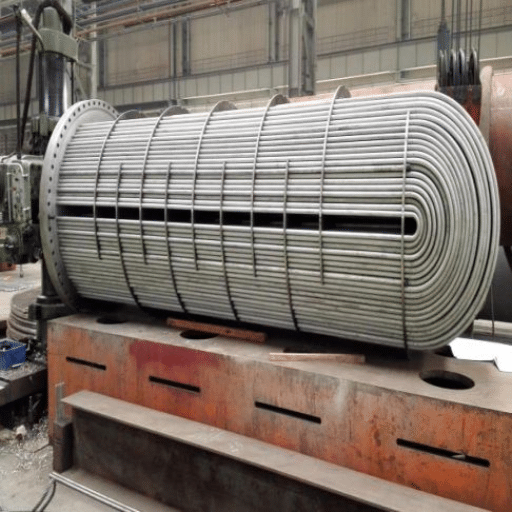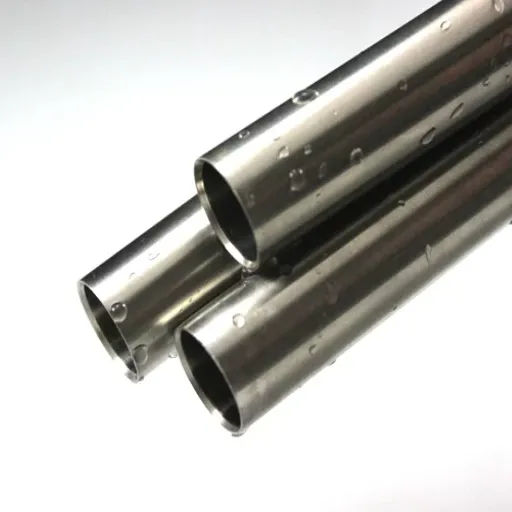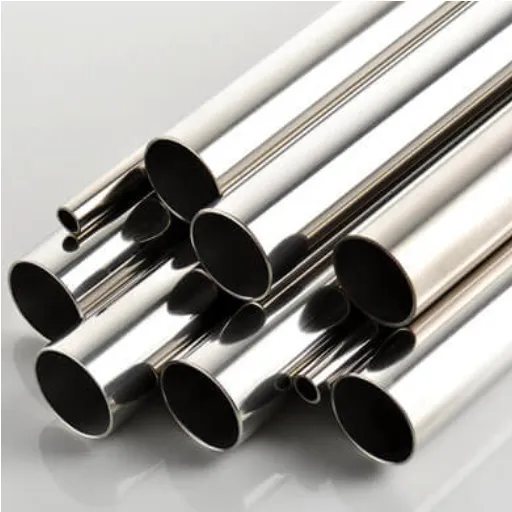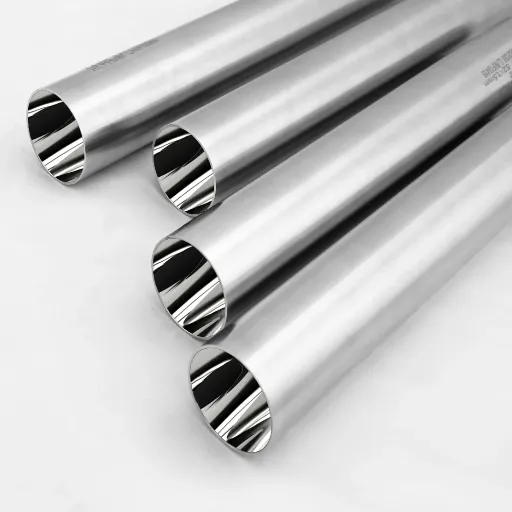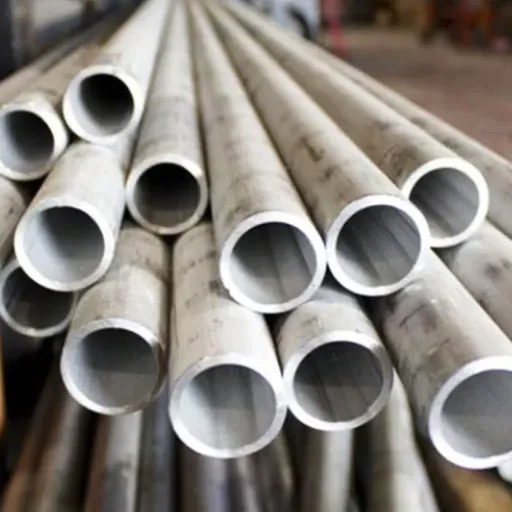In the selection of materials for diverse purposes, titanium and stainless steel very often rise to the occasion as the best options. They are both famous for their outstanding strength, durability, and a variety of uses, but they do so in a totally different manner because of their specific properties. The focus of this article is on the primary distinctions between titanium and stainless steel, and it raises a typical inquiry—”Is titanium stainless?” While comparing their composition and physical characteristics as well as their performance in various applications, this guide will finally help you determine which material is best for your particular requirements. Whether you are an engineering professional or just someone who’s interested in the field of materials science, you should continue reading for a clear and short comparison of these two metals.
Introduction to Titanium and Stainless Steel
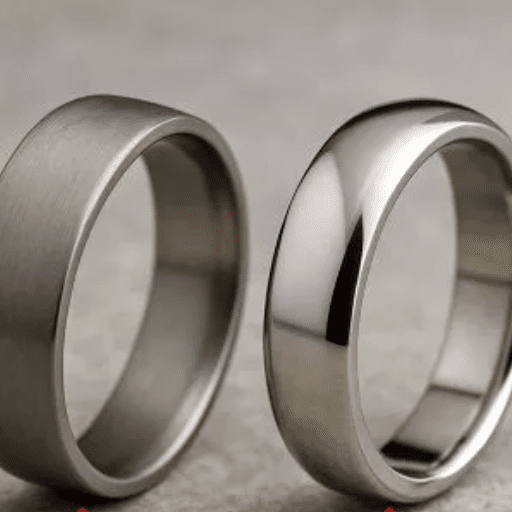
Titanium and stainless steel are two very different materials with important distinctions. Titanium is a metal that has a very low weight, a very high strength, and an extremely good resistance to corrosion; thus, it is commonly used in aerospace, medical, and performance applications. Stainless steel, in contrast, is an alloy that consists mainly of iron, chromium, and other elements; it is characterized by its long-lasting quality, high strength, and rust-resistance. Even though titanium is not stainless steel, the two materials are still very versatile and highly regarded for their individual characteristics, which allow them to be used for different purposes depending on the specific needs of the application.
What is Stainless Steel?
Stainless steel is an alloy of iron that contains at least 10.5% chromium. This is the very element that makes it resistant to rust and corrosion. The chromium oxide forms a protective layer on the surface of the metal and thus, it is able to resist rust and keep its original properties even in very unfriendly surroundings. Depending on the quality of the stainless steel, it might also contain nickel, molybdenum, and manganese, which are introduced for improving the particular characteristics like tensile strength, resistance to heat, or beauty of finish. Its wide applications account for the fact that it is easy to clean, it lasts a long time and it is very versatile; hence, it is an ideal material for the construction and architectural sectors, food processing and medical equipment industries.
What is Titanium?
Titanium, a metal that is both strong and light, up to 1000 times more resistant to corrosion than iron, is also the most used metal in the world. It is recognized for its wonderful strength to weight ratio; it can replace and substitute metals like steel in the most demanding applications at a fraction of the weight. However, it is still too expensive because of a complicated extraction and purification process which contributes to titanium being less affordable than steel. In addition to that, its “invisibility” during the corrosion process has made it suitable for many applications like the civil and medical fields where price is not an issue. Titanium has also proven to be useful in harsh environments just like the rigors of space. Such scenarios may include the lightweight demands of the aerospace and automotive industries, besides sporting goods and high-quality rotor blades and turbine components for conventional power and wind energy. Being very resistant to extreme high-temperature conditions, titanium is also applicable in such demanding areas as jet engine manufacturing and the industrial melting and mixing of materials. On top of this aero-engine technical feat, titanium keeps bringing us new cuts in the sky with its continuous rich application in the area of high-tech and other industries alike.
Overview of Titanium Alloys
Titanium alloys are the results of the mixture of separate metals aimed at the enhancement of the mechanical and physical properties of titanium. The very existence of these alloys in the industry is primarily due to the fact that they are high-strength and light-weight together, they are also very resistant to corrosion and their fantastic performance in extreme conditions. Classification of titanium alloys into three categories is mainly done according to their microstructure:
Alpha Alloys
Alpha alloys are those that come with elemental alpha-stabilizers like aluminum and oxygen for instance. The positive characteristics of these types of alloys are that they have excellent corrosion and weldability but at the same time their strength is lower when compared to other titanium alloys. Their applications are mainly in aerospace components and marine.
Near-Alpha Alloys
They are quite similar to alpha alloys but there are a couple of features that make them stand out like the presence of very small amounts of beta phase stabilizers that are like molybdenum and silicon. They can be very much attractive for high-temperature applications because of their enhanced strength and creep resistance, which are jet engines and power plant components, for instance.
Alpha-Beta Alloys
A very versatile group of alloys, alpha-beta alloys are up for grabs as they contain both alpha and beta-phase stabilizers. This dual-phase structure results in a good mixture of strength, toughness, and ductility. They are put to a lot of different uses such as medical implants, aerospace structures, and car parts.
Beta Alloys
Beta alloys stand out due to their extremely high amounts of beta-phase stabilizers like vanadium, molybdenum, and chromium. The excellent combination of strength and plasticity is the major reason they find usage in the manufacture of structural elements and, furthermore, in sports and recreation equipment.
Near-Beta Alloys
On the other hand, near-beta alloys are a mixture of beta and alpha-beta alloys and hence they not only exhibit very high strength but also have an exceptional resistance to fatigue. The use of these materials is quite common in those parts that are subjected to cyclic loads, e.g., aircraft landing gear.
Note: The final selection of the titanium alloy is mainly determined by the specific requirements of the application by striking a balance between such factors as strength, corrosion resistance, temperature performance, and cost.
Titanium vs Stainless Steel: Key Differences
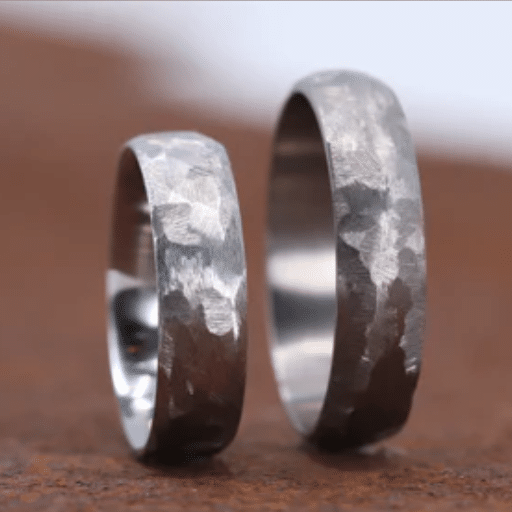
Titanium is lighter, more corrosion-resistant, and biocompatible, while stainless steel is stronger, more affordable, and easier to machine.
Corrosion Resistance Comparison
Titanium offers superior corrosion resistance, especially in harsh environments like saltwater, while stainless steel provides good resistance but may degrade in extreme conditions.
Strength and Durability: Which is Stronger than Steel?
Titanium has a higher strength-to-weight ratio, while stainless steel offers greater overall strength and durability in most applications.
Weight and Density Considerations
When it comes to the comparison of titanium and stainless steel, weight and density play an important role, especially in the sectors where the weight of the material is a factor that affects performance, such as aerospace, automotive, and medical applications. The following are the most important details and data regarding the weight and density of these two materials:
📊 Key Density Statistics
- Titanium Density: Approximately 4.5 g/cm³ – significantly lighter than stainless steel
- Stainless Steel Density: Ranges from 7.8 g/cm³ to 8.0 g/cm³ – almost twice as dense as titanium
- Strength-to-Weight Ratio: Titanium has a highly favorable ratio, making it ideal where lightness and durability are both required
- Aerospace Applications: Titanium’s lighter weight contributes to performance improvements and fuel savings
- Medical Implants: Titanium’s low density and biocompatibility reduce body stress compared to high-density materials
Properties of Titanium and Stainless Steel

Titanium has a lower density of about 4.5 g/cm³, while stainless steel has a density of about 7.8 g/cm³. As a result, the use of titanium is advantageous in applications where weight is a critical factor. The two materials have different characteristics regarding their ability to resist corrosion. Titanium, for example, thrives in the most corrosive environments, such as seawater, while stainless steel works best in less aggressive areas. The major plus point of titanium is that it can be used in areas that require the highest strength to weight ratio. Titanium can easily take the heat and still maintain strength levels, while stainless steel can also endure high temperatures but its performance drops as one goes beyond the operational limits. The cost of titanium is exorbitantly high due to its complicated extraction and processing methods. On the other hand, stainless steel, though still powerful and versatile, is more economical for many applications.
Mechanical Properties of Stainless Steel
One of the main reasons stainless steel is so highly valued by various industries is its excellent mechanical properties. The following are the five most important mechanical properties of stainless steel:
Tensile Strength
Stainless steel is characterized by its high tensile strength, which usually lies between 515 MPa and 1,600 MPa, depending on the grade. This indicates that it can be used in applications where it has to bear loads.
Yield Strength
The yield strength of stainless steel for austenitic grades is usually within the range of 200 MPa to 400 MPa, thereby revealing its ability to withstand stress without permanent deformation.
Hardness
Stainless steel shows great hardness, with its hardness levels depending on the grade. Some examples of the range of Brinell hardness are 200 HB to 600 HB for various types.
Elongation at Break
Stainless steel is very ductile, elongation at break percentages being typically 40% to 60% for austenitic grades, which greatly enhances its capability for various shaping and forming processes.
Impact Resistance
Stainless steel’s property of being able to endure impact is excellent, thus enabling its usage in applications that require toughness, even under extreme conditions like very low or very high temperatures.
Unique Properties of Pure Titanium
⚡ High Strength-to-Weight Ratio
In the field of materials, pure titanium stands out by its exceptional strength-to-weight ratio which is one of its main characteristics. It has a density of about 4.5 g/cm³, so it is much lighter than steel, but it still has the same strength as steel.
🛡️ Corrosion Resistance
Titanium has excellent corrosion resistance in many environments, such as seawater, chlorine, and acids. This property makes it suitable for marine, chemical, and medical applications.
🏥 Biocompatibility
Thanks to its non-toxic and non-reactive properties, pure titanium is biocompatible, which means that it is safe to use in medical implants and prosthetics without causing any adverse reactions.
🔥 High Melting Point
Titanium with a melting point of about 1,668°C (3,034°F) is very heat resistant and, therefore, suitable for the aerospace industry and other high-temperature environments.
🧲 Non-Magnetic and Non-Toxic
Pure titanium is non-magnetic, which makes it important for various electronic and medical applications where the interference of magnets must be avoided. It is also non-toxic and, thus, safe for industrial and consumer use.
Impact of Steel Grades on Performance
The choice of steel grades has a major impact on the performance, durability, and efficiency of materials in different areas. The properties of a specific steel grade depend on factors like carbon content, alloying elements, and heat treatment methods. Below are five popular steel grades and their respective effects on performance:
1. Carbon Steel (AISI 1018)
Key Features: Low carbon content (about 0.18%).
Impact on Performance:
- It has very good machinability
- It can be welded very well
- Its tensile strength is moderate (around 440 MPa)
- It is widely used for automotive and machinery parts
2. Stainless Steel (304)
Key Features: High chromium (18-20%) and low carbon.
Impact on Performance:
- It has excellent resistance to corrosion
- It exhibits non-magnetic properties in its annealed condition
- It is highly durable in tough environments such as marine or chemical industries
- Its yield strength is about 215 MPa
3. Tool Steel (D2)
Key Features: High carbon and chromium content.
Impact on Performance:
- It is extremely hard and very resistant to wear
- It keeps its sharpness under stress, which is perfect for making cutting tools
- It becomes tough when treated with heat, thus works for long time
4. High-Strength Low-Alloy (HSLA) Steel
Key Features: Alloying with elements such as vanadium, molybdenum, or niobium.
Impact on Performance:
- Strength-to-weight ratio is increased
- Ductility is good and welding is easy
- Structural applications Use (e.g., bridges, skyscrapers)
- Tensile strength ranks from 485 to 690 MPa
5. Spring Steel (EN 47)
Key Features: High carbon and silicon content.
Impact on Performance:
- It has the best recoverability and stretchability under dynamic loads
- You can make springs, clips, and other load-bearing applications with it
- It can take a lot of stress without being permanently deformed
Important Note: Each of the steel grades possesses different characteristics and advantages in performance which is important for industrial and engineering applications. It is important to choose the right grade so that one can get the best efficiency and longevity in the dedicated applications.
Pros and Cons of Titanium vs Stainless Steel

Disadvantages of Each Metal
Stainless Steel
- High Cost: Stainless steel is one of the most costly metals due to its alloying elements and the technical complexity of its production. Consequently, it may not be the first choice for projects with tight budgets.
- Difficulty in Machining: The strength and hardness of stainless steel make it very difficult to machine or weld, and this may necessitate the use of specially skilled workers as well as custom-designed machines.
- Thermal Conductivity: In comparison with other metals like copper and aluminum, stainless steel has a very low thermal conductivity, thereby limiting its use in some heat transfer applications.
- Weight: Stainless steel, though it is strong, is still heavier than most other materials, and this may lead to the increase of both transport and structural costs.
- Corrosion in Certain Environments: Pitting and crevice corrosion are the main corrosion issues that stainless steel faces in high chloride environments like coastal areas, even though it is generally very corrosion-resistant.
Aluminum
- Lower Strength: When compared to steel and other metals, aluminum has a much lower tensile strength; hence, it is not ideal for use in heavy-load applications.
- Surface Damage: The surface of aluminum is softer than that of other metals, which makes it very prone to scratches and dents.
- Cost Fluctuations: The market for aluminum is very volatile; therefore, its price can fluctuate sharply depending on the demand as well as on the energy-consuming production process.
- Thermal Expansion: Aluminum expands and contracts a lot with changes in temperature, especially if the application’s tolerance is low, which can result to dimensional instability in that application.
- Corrosion Vulnerability: Though protected by an oxide film, aluminum can still corrode in highly alkaline or certain acidic environments.
Copper
- Expense: Copper is one of the most expensive common metals and that is why it is not used in large-scale applications.
- Weight: Copper is a heavy metal that can hence cause problems regarding the cost of transport and the planning of structural considerations.
- Softness: Because of its malleability, copper can easily become stretched, deformed, worn out mechanically, or even be unsuitable for the application.
- Corrosion in Certain Environments: In spite of its high resistance to corrosion, copper metal can still suffer corrosion in the locations where ammonia, sulfides, or chlorides are present.
- Limited Availability: Copper is a finite resource, and increasing global demand can lead to supply constraints.
Carbon Steel
- Corrosion: Carbon steel, unlike stainless steel, lacks significant corrosion resistance and therefore coating or treatments are necessary to prevent rust.
- Brittle at Low Temperatures: In extreme cold, carbon steel undergoes a process of brittleness and loss of ductility, which in turn limits its usage in cold areas.
- Maintenance Requirements: To slow down degradation, frequent maintenance such as painting or sealing is needed.
- Weight: The heavy nature of carbon steel can result in an increase in the need for structural support and thus also lead to higher transport costs.
- Limited Durability in Certain Applications: Under very high stress or continuous exposure to moisture, it can fail sooner.
Titanium
- High Cost: Titanium is expensive both to extract and to process; thus, its areas of use are restricted to high-value or specialized industries such as aerospace or medical.
- Machining Difficulty: The same factors that make titanium costly to refine also make it impossible to machine easily without advanced tools and techniques.
- Galvanic Corrosion: In the event that titanium is in contact with dissimilar metals and there is an electrolyte, titanium may cause the connected materials to undergo galvanic corrosion.
- Limited Availability: Limited availability of titanium results from its production being resource-intensive and widely spread across certain geographical areas, which creates potential supply bottlenecks.
- Wear Resistance: While titanium is strong, the metal has less resistance to wear and tear in abrasive environments compared to some steel alloys.
Applications of Titanium and Stainless Steel
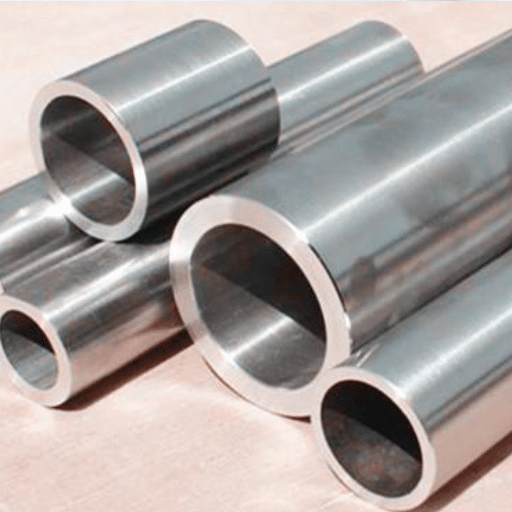
✈️ Aerospace Industry
Titanium and its light weight combined with high strength and resistance to corrosion property are the best among metals and thus, it is heavy in the aerospace industry. The aircraft parts made by the material include landing gears, engine parts, and structural frames. Stainless steel on the other hand is absolute for those aerospace applications that require toughness and durability under extreme conditions such as fasteners and hydraulic lines.
🏥 Medical Devices and Implants
Titanium is a material of choice for medical implants, including joint replacements and dental implants, thanks to its biocompatibility and light weight. Stainless steel is also extensively used in surgical instruments, prosthetics, and temporary implants where cost-effectiveness and strength are crucial.
🌊 Marine Applications
Both titanium and stainless steel are acclaimed in marine conditions. The top-notch corrosion resistance of titanium’s excellent quality in seawater for the components such as the propeller shafts, pipes, and heat exchangers. Stainless steel especially in the grades like 316 is the go-to material used for shipbuilding, anchor chains, and fittings where resistance to the elements and toughness are essential.
🧪 Chemical Processing
Titanium’s ability to withstand very high temperatures and reactive chemicals make titanium the best metal for chemical processing plants in such a way as to equip them with heat exchangers, reactors, and storage tanks. On the other hand, stainless steel is the most common choice for the chemical and pharmaceutical industries for their pipelines, vessels, and machinery because of its versatility and corrosion resistance.
⚡ Energy Generation
The importance of titanium in nuclear energy cannot be emphasized enough as the material’s characteristics like its high-temperature and corrosive environment resistance make it perfect for condenser tubing in cooling systems. Stainless steel finds applications in many energy areas such as oil and gas, and renewable energy due to its use in boiler, turbine, and pipeline components.
Common Uses of Stainless Steel
🏗️ Construction and Architecture
Stainless steel is a material that is very much in demand in the building sector because of its power, long service life, and resistance to rust. It is typically utilized in bearing parts, roofing, and wall finishes. A good example is the famous Chrysler Building in New York, which makes a lot of use of stainless steel in its aesthetics.
🍳 Kitchenware and Appliances
Stainless steel is a major factor in the production of good quality kitchenware, cookware, and appliances and its cleaning properties along with hygienic aspects are majorly responsible for this. The stainless-steel functionality is very important and at the same time its aesthetic appeal is also a major consideration of such items as pots, pans, sinks, and refrigerators.
🚗 Automotive and Transportation
In the automotive industry, stainless steel is used for exhaust systems, trim, and other parts due to its very high temperature resistance and corrosion resistance. It is also used in train cars and ships, where safety and durability are crucial for harsh conditions.
⚕️ Medical Devices and Equipment
Stainless steel is very important in the medical field due to its biocompatibility and ability to resist bacteria. It is widely used in surgical instruments, implants, and hospital equipment like IV stands and wheelchairs where the requirements for cleanliness and strength are both met.
🥤 Food and Beverage Processing
Stainless steel is a common material in the food and drink industry for the equipment used in processing, storage tanks, and the piping systems. Its resistance to corrosion protects the food from getting contaminated, while the non-reactive surface of the steel guarantees that no food safety issues arise during the manufacturing processes.
Industries That Prefer Titanium
The industries dependent on titanium are aerospace, medical, and marine sectors. The aerospace industry selects titanium for its unparalleled strength-to-weight ratio as well as its capability to endure very high temperatures. Similarly, the medical sector makes use of titanium for implants and surgical tools owing to its compatibility with living tissues and resistance to harm by chemicals. The marine industry, in turn, takes advantage of titanium’s durability in the saltwater environment, which makes it suitable for ship parts and underwater systems.
Choosing Between Titanium and Stainless Steel for Your Project
To start with, one should weigh the pros and cons of titanium and stainless steel according to several factors then make a decision between the two. If the project’s specification is demanding a material with high strength-to-weight ratio, corrosion resistance of the highest quality, or a material able to withstand extreme environments, then titanium should be the first choice. Aerospace, medical, and marine industries are the ones that benefit the most from titanium’s top features, as they cannot do without them. On the downside, titanium is still among the most expensive metals and its machining is also more difficult when compared with the stainless steel process.
Stainless steel, on the other hand, is a widely used material that is financially attractive as well as versatile. It gives fair to good mechanical properties, corrosion resistance of a very good standard but only in mild environments, and it is easy to fabricate. Other factors, such as material cost and durability, are crucial and hence the most common applications of stainless steel are in building construction, home appliances, and automotive parts, among others.
A recent analysis has shown that “titanium versus stainless steel” still remains one of the most searched queries, especially for the light but strong materials requiring industries. General advice coming from the experts however, is to first definitely pin down the project scope with details such as budget, operating conditions, desired mechanical properties, etc. before making a material decision. It is true both metals have their advantages, and knowing your situation well is the only way to pick the right one.
🎯 Key Factors to Consider
Budget
Consider both initial costs and long-term value
Operating Conditions
Evaluate environmental factors and stress levels
Weight Requirements
Determine if weight reduction is critical
Corrosion Exposure
Assess the severity of corrosive environment
Mechanical Properties
Match material strength to application needs
Fabrication Ease
Consider machining and assembly requirements
📚 References
- The Use of Titanium and Stainless Steel in Fracture Fixation – Taylor & Francis Online: Explores the differences and applications of titanium and stainless steel in medical fracture fixation.
- Difference in Metallic Wear Distribution Released from Titanium vs. Stainless Steel Plates – Springer: Examines wear distribution and contamination risks between titanium and stainless steel implants.
- A Systematic Review of Titanium vs. Stainless Steel Implants for Fracture Fixation – LWW Journals: Reviews research comparing the use of titanium and stainless steel in medical implants.

